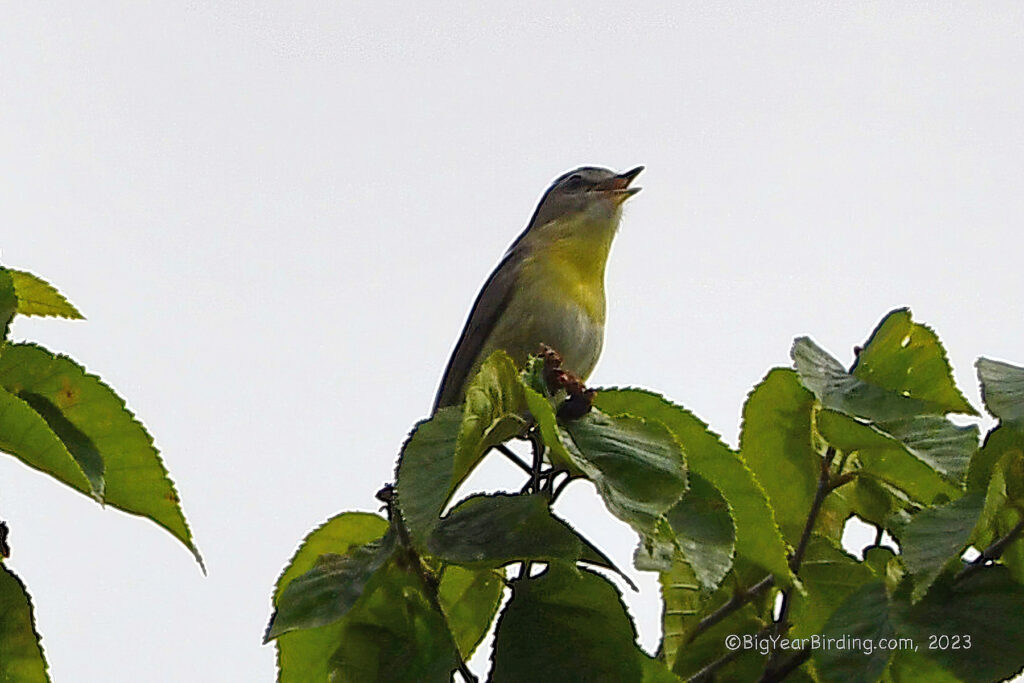
The Philadelphia Vireo (Vireo philadelphicus) is a small, insectivorous bird found in the eastern parts of North America. This species measures about 4.5 to 5 inches (11 to 13 centimeters) in length and weighs approximately 0.25 to 0.3 ounces (7 to 9 grams). They have a relatively short, squared tail, and a distinct greenish-yellow back, with a grey-blue head, and a yellowish-white throat and underparts. The most distinguishing field marks of this species are their distinct yellow spectacles around their eyes, which contrast with their grayish-blue crown and cheeks.

The Philadelphia Vireo is known for its migratory behavior, as it breeds in the boreal forests of Canada and then travels southward to spend its winters in Central and South America. During the fall migration, they can be found in the eastern United States and Mexico, while during the spring, they can be found in the central and eastern regions of North America. The timing of their migration can vary, with some birds arriving as early as late August, while others may not appear until early October. They tend to travel in small groups during migration, often associating with other vireo species.
The Philadelphia Vireo is primarily insectivorous, with their diet consisting of small insects, spiders, and occasionally fruits. They forage by gleaning insects from foliage, using a hop-and-flutter technique to move through trees and shrubs. They tend to be found in forested areas, particularly those with a mix of deciduous and coniferous trees.

While the Philadelphia Vireo is considered to be a relatively common species, their populations have shown some decline in recent years, likely due to habitat loss and fragmentation. Conservation efforts have been focused on protecting their breeding and wintering habitats, as well as managing forests to maintain the mix of tree species that they require.

In terms of vocalizations, the Philadelphia Vireo has a distinctive, nasal song, which has been described as a “hoarse, nasal, and high-pitched ‘fee bee-ee-ee-ee’.” They also have a variety of calls, including a sharp “chick” or “tsick” call, as well as a softer “chip” call. These vocalizations can be useful in identifying the species, particularly when other vireo species are present in the same area.
